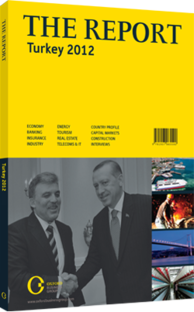Erdem Başçı, Governor, Central Bank of the Republic of Turkey (CBRT), on measures to preserve financial stability

The expansionary monetary policies which were adopted by central banks of developed countries to contain the impact of the global financial crisis had significant reverberations on developing economies. The Turkish economy was no exception in this regard. During this period, the availability of ample low-cost and short-term foreign financing led to rapid credit expansion and an appreciation of the Turkish lira. This caused an accumulation of macro-financial risks and rising external imbalances as of the second half of 2010. As escalating risks pertaining to financial stability have the potential to hamper price stability over the medium term, the CBRT adopted different approaches to incorporating financial stability into the monetary policy framework.
In line with its mandates of price stability and financial stability as detailed in the Central Bank Law, the CBRT adopted an integrated policy that combines management of the policy rate with complementary tools such as reserve requirement ratios and the interest rate corridor. By lowering financial imbalances, these policies aim to ensure sounder economic growth, in the context of price stability.
In the period between November 2010 – when the new policy strategy was introduced – and August 2011 the monetary policy strategy was shaped around two axes. The first was to channel capital inflows to longer-term instruments and prevent the over-appreciation of the lira. Secondly, the CBRT set out to achieve a more controlled growth in domestic loans and domestic demand and rebalance domestic and external demand. During this period the interest rate corridor was widened downwards due to the strong risk appetite and intense short-term capital inflows. Reserve requirement ratios were significantly increased, and foreign exchange buying auctions were held regularly to take advantage of strong capital inflows to build up reserves. These measures made a significant contribution in mitigating excessive appreciation pressures on the lira. Meanwhile, a notable deceleration was observed in loan growth after mid-2011, owing also to the measures taken by the Banking Regulation and Supervision Agency. As a consequence, the key indicators began to improve and the economy assumed a rebalancing trend as of mid-2011.
Due to the mounting concerns over the global growth outlook and sovereign debt problems in some European economies, as of August 2011 global risk aversion escalated and the volatility in risk appetite reached historic heights. As capital outflows from developing countries accelerated in this period, the CBRT used the same policy tools in the opposite direction compared to the previous period. The interest rate corridor was narrowed by raising overnight borrowing rates and Turkish lira reserve requirements were revised to decrease the liquidity requirement of the banking sector.
However, the rise in inflation was higher than expected due to excessive depreciation of the lira stemming from deterioration in the global risk appetite since August and adjustments in administered goods prices in the final quarter of 2011. In order to contain the adverse effects on the medium-term inflation expectations and outlook, the CBRT raised overnight lending rates in October 2011 and widened the interest rate corridor upwards. Thus, overnight lending rates were permitted to materialise above the policy rate through adjustments to the funding provided to the market. In the meantime, the reserve requirement ratio was reduced in order to prevent an undesirable tightening in liquidity conditions driven by the increase in overnight interest rates. The measures taken since August have significantly alleviated the adverse effects of fluctuations on the Turkish economy, which emerged in parallel to uncertainties in the European economy. The CBRT’s measures regarding the foreign exchange market and decisions related to the interest rate corridor in August and October reduced the extent of the fluctuations in the exchange rate compared to that of other emerging market economies. The monetary tightening started in October 2011 has proven successful, and loan growth and domestic demand are predicted to follow a moderate course in the upcoming period.
You have reached the limit of premium articles you can view for free.
Choose from the options below to purchase print or digital editions of our Reports. You can also purchase a website subscription giving you unlimited access to all of our Reports online for 12 months.
If you have already purchased this Report or have a website subscription, please login to continue.

